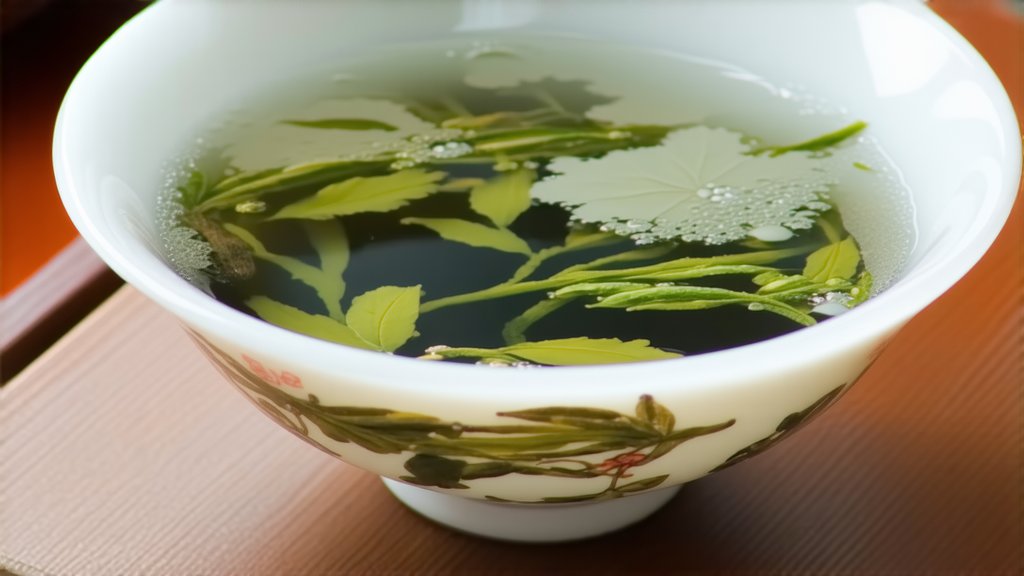
Introduction
White tea, known for its minimal processing and subtle flavors, holds a revered place in the pantheon of Chinese teas. Among the various types of white tea, one variety stands out for its elegance and distinctive taste—Bai Mu Dan, also known as White Peony. This article delves into the rich history, unique characteristics, meticulous production process, proper brewing techniques, and refined tasting methods associated with Bai Mu Dan, offering an immersive experience for tea enthusiasts worldwide.
Historical Roots
The origins of Bai Mu Dan can be traced back to the Fujian province of China, particularly in the regions of Fuding and Zhenghe. Historical records suggest that white tea production dates back over a thousand years, with Bai Mu Dan gaining prominence during the Ming Dynasty (1368-1644). It was highly regarded by Chinese emperors and nobility for its delicate flavor and health benefits. Over time, it became a symbol of refinement and sophistication, often featured in classical Chinese literature and art.
Varieties and Characteristics
Bai Mu Dan is characterized by its large, silver-white buds and light green leaves. The term "Bai Mu Dan" translates to "White Peony," reflecting the appearance of the tightly rolled leaves interspersed with downy buds, reminiscent of a peony flower. This tea is harvested primarily in spring, with the first flush (early spring) being the most prized for its superior quality.
There are different grades of Bai Mu Dan, ranging from Silver Needle (Yin Zhen), which consists solely of young buds, to higher-grade Bai Mu Dan, which includes a mix of buds and leaves. The latter offers a more complex flavor profile while maintaining the characteristic sweetness and smoothness of white tea.
Production Process
The production of Bai Mu Dan involves several intricate steps that preserve its natural qualities and delicate flavors. Here's a detailed look at the process:
-
Plucking: The journey begins with the careful selection and plucking of tender buds and young leaves. Only the finest shoots, ideally those with a good balance of buds and leaves, are chosen.
-
Withering: The plucked leaves are then spread out thinly on bamboo trays and allowed to wither naturally under the sun or in well-ventilated shade. This step reduces moisture content and prepares the leaves for subsequent processing.
-
Fixation: Unlike other teas, Bai Mu Dan undergoes minimal fixation. It is briefly baked at low temperatures to halt oxidation and stabilize the tea's natural flavors.
-
Drying: The final step involves drying the tea thoroughly to remove any remaining moisture. This is usually done in a controlled environment to ensure the tea retains its freshness and aroma.
-
Sorting and Grading: After drying, the tea is sorted and graded based on the size, shape, and quality of the buds and leaves. Higher-grade Bai Mu Dan will have a greater proportion of buds to leaves.
Brewing Techniques
To fully appreciate the nuanced flavors of Bai Mu Dan, it is essential to master the art of brewing. Here are some recommended techniques:
-
Water Quality: Use high-quality, soft water to avoid altering the tea's natural taste. Filtered or spring water is ideal.
-
Water Temperature: Heat the water to approximately 80-85°C (176-185°F). Boiling water should be avoided as it can scorch the delicate leaves.
-
Tea-to-Water Ratio: For a standard pot of tea, use about 3-5 grams of Bai Mu Dan per 150-200 ml of water. Adjust according to personal preference.
-
Steeping Time: Allow the tea to steep for 3-5 minutes. Longer steeping times may result in a more robust flavor, while shorter times will yield a lighter, more subtle brew.
-
Multiple Infusions: Bai Mu Dan can be steeped multiple times, each infusion revealing different layers of flavor. Adjust the steeping time slightly for subsequent infusions to maintain balance.
Tasting and Appreciation
Tasting Bai Mu Dan is an art form that requires attention to detail and a refined palate. Here are some tips for appreciating this exquisite tea:
-
Color: Observe the color of the brewed tea. High-quality Bai Mu Dan should produce a pale yellow-green liquor, indicative of its gentle processing.
-
Aroma: Inhale deeply to appreciate the fragrance. Notes of fresh hay, floral undertones, and a hint of sweetness should be present.
-
Taste: Sip slowly, allowing the tea to coat your tongue. Savor the initial sweetness, followed by subtle fruity or floral notes, and a clean, refreshing finish.
-
Mouthfeel: Pay attention to the texture of the tea in your mouth. Bai Mu Dan is known for its smooth, silky mouthfeel, devoid of bitterness or astringency.
-
Aftertaste: Notice the aftertaste, which should linger pleasantly, leaving a mild sweetness and a sense of purity.
Conclusion
Bai Mu Dan, with its historical significance, delicate appearance, and nuanced flavors, stands as a testament to the artistry and tradition of Chinese white tea. From its ancient roots to modern-day appreciation, this tea continues to captivate tea connoisseurs around the world. By understanding its history, production process, brewing techniques, and tasting methods, one can truly appreciate the elegance and allure of Bai Mu Dan. Whether enjoyed as a moment of tranquility or shared among friends, this exquisite white tea offers a sensory journey that transcends time and culture.